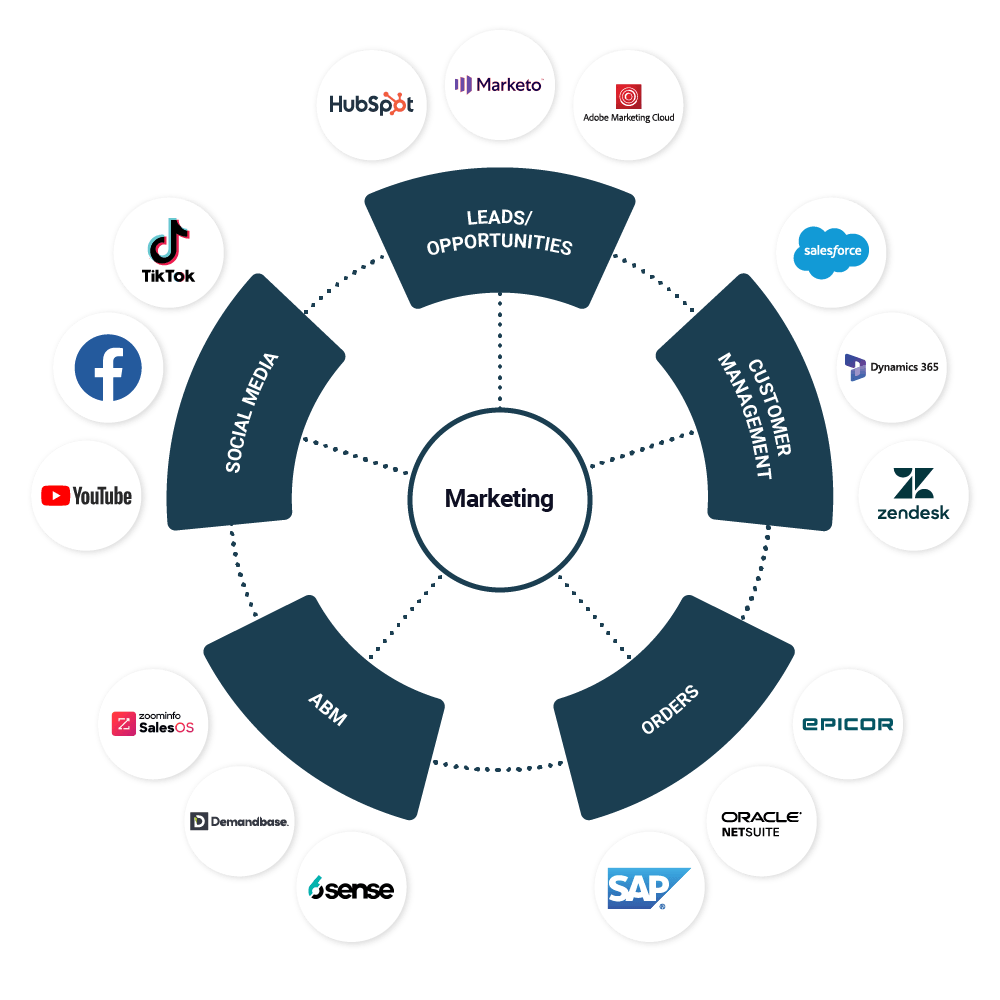Marketing Automation Integration
Centralize marketing data, improve campaign forecasting, and automate data transfers between applications, CRM, and ERP systems.

Marketing Automation and CRM Integration Success Stories
As one of the world’s largest online educators, Berklee Online’s IT infrastructure was constantly expanding, adding new systems to meet the evolving needs of their students, faculty, admissions staff, and marketing team. With so many different systems to manage, they struggled with inefficient processes, siloed data, and limited data visibility.
By leveraging Jitterbit’s integration platform, Berklee Online was able to connect their Salesforce CRM with marketing automation tools like Marketo, as well as Ellucian Colleague ERP and internal databases.
“We use Jitterbit to centralize and manage multiple integrations between multiple systems without having to increase our technology spend for our infrastructure every time we add a new system.”
– Luke Stevens, Director of Technology, Berklee Online
“The speed to build integrations is amazing, within two days we were able to create a file transfer integration with a vendor to provide them with marketing data.”
– Scott Edwards, Manager, Business Systems

Myriad Genetics faced challenges integrating their new Salesforce CRM with existing systems. To speed up the integration process and support their cloud migration, Myriad deployed Jitterbit’s low-code integration platform to connect Salesforce with their marketing automation tools. This allowed Myriad to focus on leveraging integrated marketing data for better business value.
More Than a Marketing Automation Platform
When it comes to marketing automation, Jitterbit offers unparalleled flexibility, scalability, and integration capabilities. We don’t just automate marketing tasks; we connect your entire business. With robust integration, API management, EDI, and low-code application development capabilities, we help fuel innovation, streamline operations, and surfaces data-driven insights.
By integrating marketing applications with CRM and ERP systems across channels including social media, email, content creation, and advertising, businesses can create a seamless brand experience for customers.
Common Use Cases for Marketing Automation Integration
Integrate systems to automate workflows throughout the entire customer journey, from lead gen to sales. Establish a single source of truth for marketing data across teams and departments.
Lead Generation
Create a frictionless, integrated marketing experience that accelerates lead generation by connecting your CRM to your marketing automation platform.
- Stop managing leads manually by syncing customer data between your CRM and marketing automation tools.
- Measure campaign effectiveness in real time by automating data flow between your marketing and CRM systems.
- Get teams on the same page by integrating your sales and marketing applications in one place.
Turn Countless Apps Into One Seamless Ecosystem

Hubspot

Salesforce
Oracle NetSuite

Google Cloud
Marketo
ActiveCampaign
Zendesk




